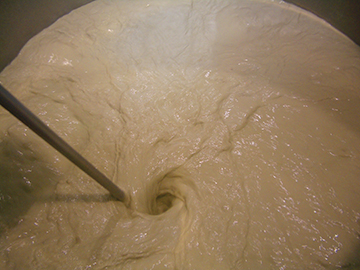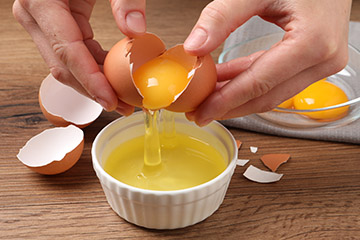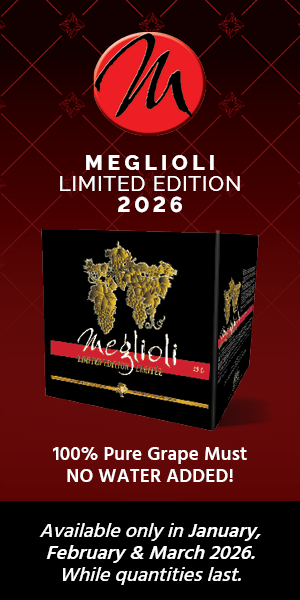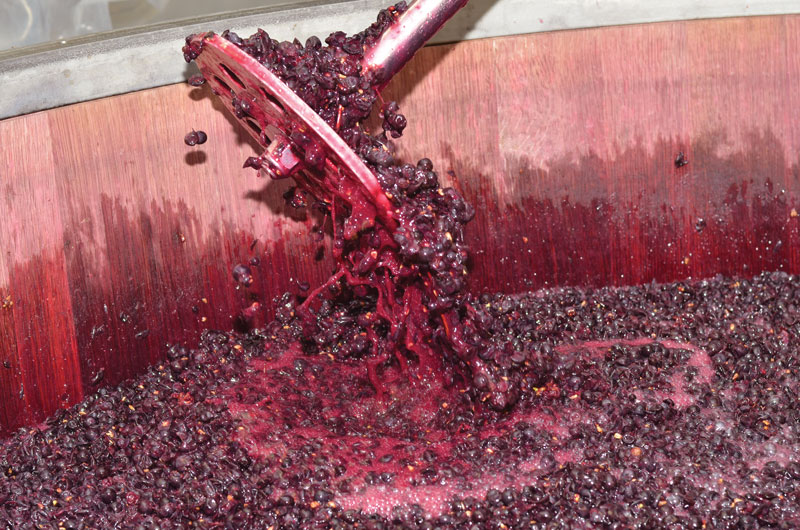Fining procedures for home winemakers mostly fall into categories of clarification and stabilization. For clarification, you may need to drop out cloudy materials. For stabilization, you may be fining the wine to prevent a protein haze. Fining procedures are distinguished from other winemaking modifications in that the material added is intended to be removed as part of the process. Even if a wine is not flawed, there may be a qualitative improvement that can be addressed by fining. In making treatment decisions, bench trials always provide the best guide to potential fining treatments.
The most common categories of fining homemade wines are physical clarification of juice or wine, astringency and bitterness reduction through tannin removal, and cold stabilization to prevent future precipitation of tartrate crystals. Once you have done trials to make a fining decision, the next step is to carry it out. Most importantly, follow the instructions included with commercial fining agents or the guidance from a reliable home winemaking text. Rapid mixing of a fining agent will be needed to avoid losing effectiveness in the treatment. Excessive dissolved carbon dioxide may interfere with settling of some fining agents, so degassing your wine before treatment may be needed. Fining will often involve some dilution of your wine, but try to minimize that effect. One caution in that regard though: If the fining agent is supposed to be prepared in water, do not substitute some of your wine to avoid dilution. A concentrated addition to a portion of your wine will strongly treat that portion, but may reduce effectiveness when mixed with the bulk batch.
After treatment, rack clear wine off the lees in a few days. Extended contact may lead to reversal of the desired effects. You will lose some volume to the new lees upon transfer, so plan to top up carboys, tanks, or barrels. In choosing timing and dosage, also keep in mind avoidance of “over fining.” In commercial winemaking, that condition may include leaving behind excess fining agent in violation of winemaking regulations. For home use, it more casually implies that fining too aggressively may “strip” the wine of desirable characteristics.
Common fining agents can be grouped into the categories of minerals, polysaccharides, synthetic polymers, and proteins, each of which I’ll address separately.
Mineral Fining

The most common mineral fining agent is bentonite, a clay mined in Wyoming. One common use of bentonite is removal of proteins that cause haze in a wine. The mineral is an aluminum silicate with exchangeable cations (positively charged ions). Sodium bentonite is used most in North America, while calcium bentonite sees more use in Europe. The sodium version removes proteins more aggressively, while the calcium version produces more compact lees.
When dispersed in water, bentonite forms structures with negative charges along the faces. These charges bind with positively charged protein molecules and settle out, leaving clarified wine. Typical use is about 2–8 g of bentonite per gallon (0.5–2 g/L) of wine. Suspend the bentonite in 20 times as much water, mix well, and stir into the wine. A blender can help make a smooth slurry as you hydrate the clay. Some versions are prepared in hot water — the instructions that come with your product will let you know.
Polysaccharide Fining
Polysaccharide fining agents are used for physical clarification and have little effect on color, flavor, or aroma. This group is primarily naturally alginate materials extracted from marine plants and combined with an inert diatomaceous earth carrier. They are mostly long chain polymers of mannuronic and guluronic acids that, when suspended in water, exhibit strong positive surface charge. Colloids that resist settling in white or rosé wines are negatively charged, with particles repelling each other. When the positively charged alginates combine with them, the charges are neutralized, and haziness drops out. Note that hot-mix and cold-mix products are available, so follow manufacturer’s instructions. Use rates are commonly in the range of 1–1.5 g per gallon (0.3–0.4 g/L) of wine. Since the ionic charge action is opposite that of bentonite, these products can be used as a top dressing over otherwise fluffy bentonite lees for better compaction.
Some fining products are sold in combination for a two-step process. A common pair of this kind is kieselsol plus chitosan. Kieselsol is a silica mineral with negative surface charge, and it is followed with an addition of chitosan, a protein fining agent with positive surface charge. Historically, chitosan was derived from the shells of crustaceans, leaving some winemakers concerned about seafood allergies. Modern products, though, are often derived from laboratory-cultured Aspergillus niger fungus and have no seafood content — if this is a concern, check with your supplier.
Synthetic Polymer Fining
Unlike these natural products, PVPP (polyvinylpolypyrrolidone) is a synthetic polymer and is insoluble in water or wine. Rather, when it is used for fining, particles absorb water and bind with compounds that otherwise may cause browning or pinking in white wines or rosés. PVPP may remove some bitterness if present, but does not drop out tannins. If used in excess, it may strip wine of some complexity while targeting primarily catechin and anthocyanin color compounds for removal.
When using PVPP to remove brown or pink pigments, the use rate is usually 0.5–2.5 g per gallon (0.1–0.7 g/L). The lees may be fluffy and you may need to filter the wine after treatment to remove all of the polymer.
Protein Fining
In red winemaking, a wine may sometimes come out too harsh or astringent. While extended aging in barrel or bottle will often mellow it out as tannins polymerize, there are more direct interventions that may get you there sooner. Protein fining agents have been in use for hundreds of years for tannin removal and come in a wide variety. While most of these products are traditionally of animal origin, newer plant-based protein products offer winemakers choices for vegan tannin removal.
Proteins react with polyphenolic materials, binding and dropping out. The goal is to reduce harshness and round out the wine’s profile. There is some reactivity with brown products of oxidation and a wine may be freshened, but this is challenging to predict and bench trials are needed. Trials are advised in any case, since two distinct “over fining” results may occur. The wine may be so stripped of tannic “grip,” causing it to become bland, or protein may remain in the wine causing a haze. The traditional animal-derived proteins are isinglass from fish sources, gelatin from the hides and connective tissues of farm animals, egg whites, and casein from milk. Of the newer plant-based protein products, pea protein and potato protein are popular choices.
Isinglass, originally from sturgeons, is now produced from other fish species as well. It is a very gentle protein fining and unlikely to strip a wine of character. Among the proteins, it is the one most often used in white, rosé, and sparkling wines. In lighter wines, it may “unmask” fruit character without making other dramatic changes. While gentle fining may be exactly what you want, use fresh product from a reputable source as isinglass may develop fishy odors in long storage. Isinglass produces bulky lees, possibly resulting in a larger loss of wine on racking. Its use is commonly added at a rate of 0.25–0.6 g per gallon (0.07–0.16 g/L).
Gelatin for enological use is produced in the same way as dessert gelatin. The hides, bones, and connective tissue of farm animals are boiled and the resulting proteins purified. Cattle and swine have been used in the past, but most enological gelatin in recent years is from pigs, avoiding concern about “mad cow” disease risks. Gelatin products are rated by their ability to “gel” or firm up when mixed under specific test conditions. The scale used is called Bloom units, with larger numbers indicating firmer gel. Dessert gelatin is usually rated around 175 to 275 Bloom, with enological gelatin softer at 80 to 150 Bloom. Gelatin bonds preferentially with large tannin molecules, leaving smaller color and tannin contributors less affected. It is considered an aggressive protein fining, and it may require counter-fining with an added tannin product if too much gelatin was used first. Use rate is in the range of 0.03–0.5 g per gallon (0.8–13 g/hL).

Egg white fining has a long tradition in French red wine production. While purified, stabilized packaged egg albumen products are available for commercial use, ordinary fresh egg whites are convenient for home winemakers. Eggs are in every supermarket and packaging is in a small dose (an egg). Less aggressive than gelatin, egg white is unlikely to remove fruit character. It is rarely used in white wines, however, as there may be some protein left in the wine that could produce a haze. To fine with egg whites, separate yolks from whites just as you would for a soufflé or meringue, reserving the yolks for another purpose. Beat the whites with a small amount of water and wine, plus a pinch of potassium chloride salt. Avoid stiff foam as it will float on the wine and stir the soft foam into the barrel, tank, or carboy. Allow it to react for a few days to a couple of weeks and rack off. One egg white will treat 10–15 gallons (38–57 L).
Casein, the primary protein of milk, is available as a dry enological powder or as potassium caseinate. Potassium caseinate can be used in wine directly while casein powder needs to be rehydrated under alkaline conditions. More simply for the home winemaker, fresh cow’s milk can be used without any processing. Casein softens tannins of red wine, but not as much as gelatin does. There is also potential for removing pinking of white wines, but not as effectively as PVPP. Use rate of casein is generally 0.2–0.9 g per gallon (50–250 mg/L). When fresh milk is used, wine acid causes it to quickly coagulate and drop out. Rack within a few days to avoid risk of souring of the milk solids. For home use, either nonfat milk or whole milk can be employed. Nonfat milk performs much like commercial potassium caseinate products and has the added advantage of adding a small amount of lactose to the wine. Lactose is unfermentable by wine yeast but tastes sweet. In trying to improve a harsh red wine, the added sweetness may further enhance the tannin removal effect of the casein. Using nonfat milk eliminates a risk of rancidity from oxidation of milkfat, but there are possible advantages in whole milk. There are reports of milkfat absorbing unpleasant wine oxidation products, TCA (“cork taint”), or smoke taint compounds after grapes have been exposed to wildfire smoke. Rack within a few days to minimize spoilage risks. U.S. regulations limit liquid milk addition to commercial wines at 0.2% of volume (8 mL per gallon or 2 mL/L) to avoid excessive dilution, but home winemakers may find beneficial additions as high as 50 mL per gallon (13 mL/L), based on trials.
For those winemakers who wish to remove tannic harshness and possibly oxidized polyphenolics without the use of animal products, new plant-based products are being introduced. One such pea-protein fining agent is Enartis Plantis AF, recommended for clarification of whites and rosés, in addition to tannin removal from reds. Use rate is 0.4–1.2 g per gallon (10–32 g/hL) and, like other fining agents, should be determined by bench trials. A follow-up fining with bentonite is recommended if the wine is not completely clear.
Loaded with this information, it’s time to put the fine art of fining to work in your home winery.





